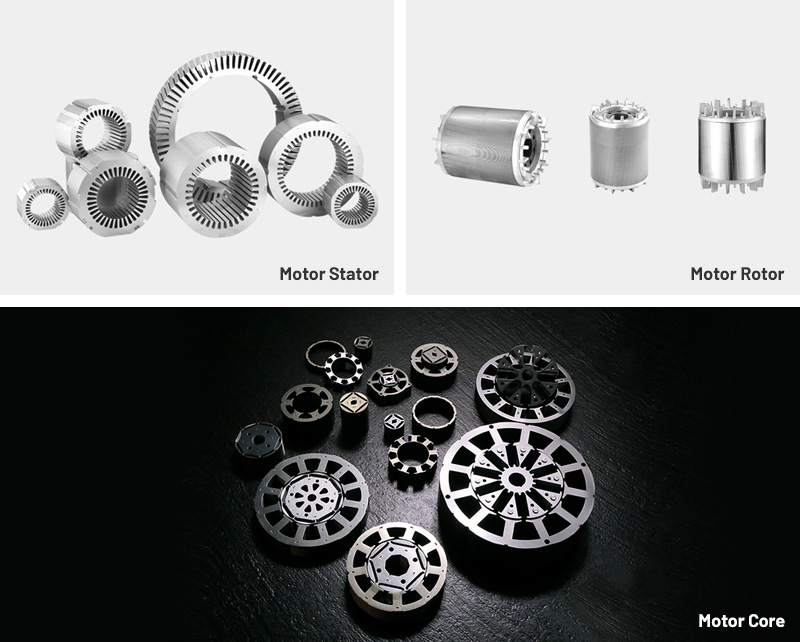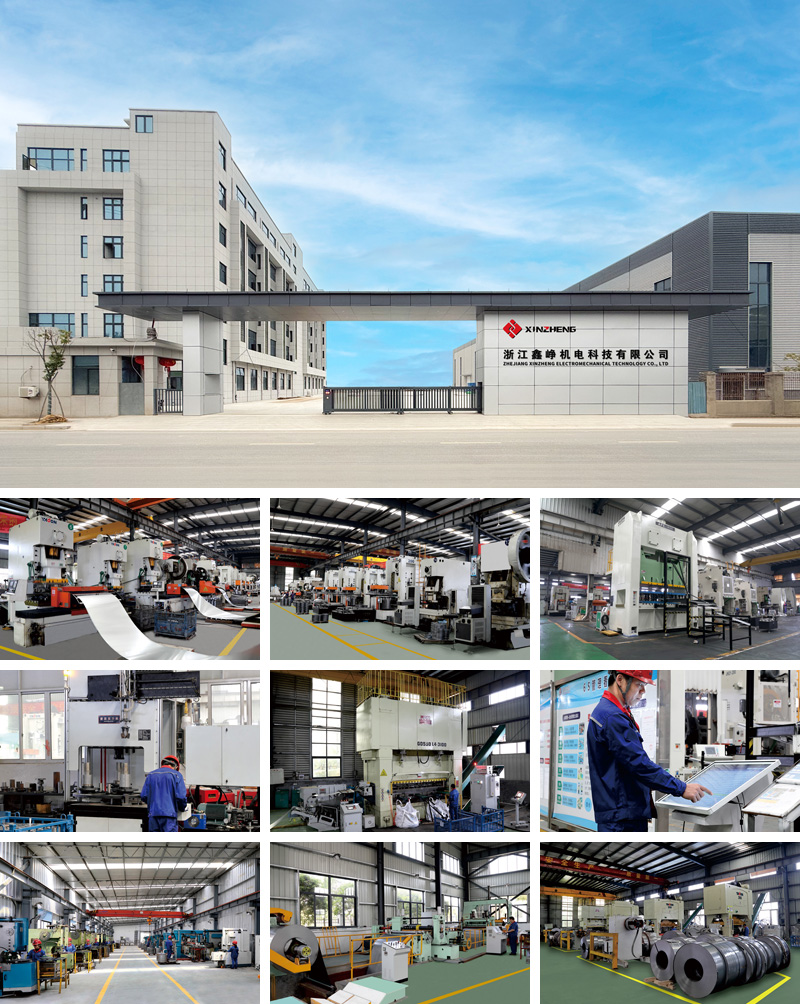Three-phase asynchronous motors are among the most widely used industrial motors globally due to their robustness, simplicity, and cost-effectiveness. They are integral to manufacturing, energy, HVAC, water treatment, and material-handling sectors. With industrial motors accounting for a significant portion of electricity consumption, improving energy efficiency has become a priority for manufacturers and plant operators.
Energy-efficient motors reduce operating costs, comply with increasingly stringent regulations, and contribute to sustainability initiatives. Within these motors, the rotor is a key component, directly influencing torque generation, operational efficiency, and heat management. YB2 series motor rotor laminations are specifically engineered to minimize core losses and enhance motor performance, making them critical for modern industrial applications.
The efficiency of three-phase asynchronous motors is closely linked to the rotor’s magnetic behavior. Two major types of energy loss occur in the rotor core: eddy current losses and hysteresis losses. Eddy currents are circulating currents induced by alternating magnetic fields, generating heat and reducing efficiency. Hysteresis losses occur due to repeated magnetization of the rotor steel during each AC cycle.
Laminating the rotor into thin, insulated sheets significantly reduces these losses. Each lamination interrupts the path of eddy currents while maintaining optimal magnetic permeability. High-quality laminations improve magnetic flux distribution, reduce temperature rise, and ensure smooth torque output. YB2 series rotor laminations are designed to achieve these objectives, supporting continuous-duty operation with minimal energy loss and enhanced reliability.
YB2 series rotor laminations are produced from premium silicon electrical steel, selected for its high magnetic permeability, low hysteresis loss, and adequate resistivity to suppress eddy currents. Laminations are coated with a uniform insulation layer to electrically isolate sheets and prevent short-circuiting, ensuring stable magnetic performance and reduced heat generation.
Precision stamping or laser cutting produces rotor laminations in exact shapes, including slots for rotor bars and the central shaft bore. Typical lamination thickness ranges from 0.35 mm to 0.50 mm. Thinner laminations reduce energy loss but must retain sufficient mechanical strength to endure centrifugal forces and vibration during high-speed rotation.
Material Preparation: Electrical steel coils are inspected and cleaned for uniformity.
Precision Cutting: Laminations are stamped or laser-cut to exact dimensions with minimal burrs.
Insulation Coating: Each lamination receives a consistent insulating layer to prevent interlaminar conduction.
Stacking and Rotor Assembly: Laminations are aligned and stacked concentrically, forming a mechanically stable rotor core.
Rotor Bar Insertion: Conductive bars are inserted, and the assembly is secured with end rings, completing the rotor construction.
This process ensures that YB2 rotor laminations deliver optimal magnetic performance, thermal management, and mechanical stability across industrial operating conditions.
The efficiency and reliability of rotor laminations depend on several critical factors:
Steel Grade and Magnetic Properties: High-grade silicon steel reduces core losses and ensures consistent flux behavior.
Lamination Thickness and Insulation Quality: Optimized thickness balances efficiency with mechanical integrity, while insulation prevents short circuits between sheets.
Dimensional Accuracy: Precise slot and bore dimensions minimize vibration, torque ripple, and uneven magnetic flux distribution.
Stacking and Assembly Precision: Proper stacking reduces air gaps and maintains mechanical stability at high speeds.
Thermal Management: Efficient heat dissipation preserves insulation integrity and prolongs rotor life.
Process Consistency: Controlled manufacturing and quality checks ensure uniform performance across batches.
Attention to these factors ensures that YB2 series rotor laminations meet design specifications and support long-term, high-efficiency motor operation.
Selecting the right supplier for YB2 rotor laminations is crucial for consistent motor performance:
Material Certification: Suppliers must provide detailed documentation of steel grade, lamination thickness, and magnetic loss characteristics.
Manufacturing Capabilities: Precision cutting, stacking, and insulation processes are essential for consistent lamination quality.
Quality Assurance: Batch-level testing, dimensional inspection, and magnetic property verification ensure compliance with design standards.
Regulatory Compliance: Suppliers should adhere to IE2/IE3 energy-efficiency regulations and relevant environmental standards.
Delivery Reliability: Consistent supply prevents production delays for motor manufacturers and OEMs.
A trusted supplier ensures that rotor laminations consistently meet performance requirements, supporting energy-efficient and reliable motor systems.
Despite advances in lamination technology, several challenges remain in motor rotor production:
Excessive Core Losses: Poor material quality, incorrect lamination thickness, or inadequate insulation can increase energy loss.
Overheating: Inefficient heat dissipation or prolonged high-load operation may degrade insulation and shorten rotor life.
Vibration and Noise: Misaligned stacks or dimensional inaccuracies can cause vibration, noise, and uneven torque.
Batch Variability: Inconsistent lamination quality can lead to motors with fluctuating performance.
Cost Constraints: High-quality materials and precision manufacturing can increase production costs, requiring careful balancing of cost and performance.
Addressing these issues requires strict quality control, process standardization, and supplier oversight.
YB2 series rotor laminations are widely applied in industrial settings requiring durability, high efficiency, and reliable performance:
Industrial Pumps and Compressors: Continuous operation in chemical plants, HVAC systems, and water treatment facilities.
Fans and Ventilation Systems: Motors in commercial buildings, data centers, and industrial ventilation benefit from low heat generation and noise.
Conveyor Systems and Material Handling Equipment: High-volume production and logistics operations demand consistent torque and long-term reliability.
Energy-Efficient Systems: Motors in renewable energy or hybrid energy applications benefit from reduced core losses and enhanced efficiency.
Motor Retrofits and Upgrades: Replacing older rotors with YB2 laminations improves energy efficiency, reduces operating temperatures, and extends motor lifespan.
In each scenario, the quality of rotor laminations directly influences energy efficiency, torque stability, and operational longevity.
The industry is adopting higher-grade silicon steel with refined grain structures and enhanced resistivity to further reduce core losses and enable thinner laminations while maintaining mechanical strength.
Adhesive bonding and heat curing methods reduce interlaminar gaps, improve thermal conductivity, and enhance structural integrity compared to conventional stacking.
Variable-frequency drives (VFDs) are increasingly used to control motor speed. Rotor laminations are being optimized for fluctuating flux densities and thermal loads to maintain efficiency and reliability under dynamic operating conditions.
Industrial buyers increasingly require traceable materials, batch-level documentation, and compliance with energy-efficiency and environmental standards. Suppliers offering transparency gain competitive advantages in global markets.
Computer-controlled stamping, automated stacking, and non-destructive testing enhance precision, reduce variability, and ensure consistent performance in high-volume production.
Q: Why are rotor laminations important in three-phase asynchronous motors?
A: Laminations reduce eddy current and hysteresis losses, minimize heat buildup, and improve overall motor efficiency. Without laminations, solid rotors experience higher energy loss and shorter operational life.
Q: How does lamination thickness impact performance?
A: Thinner laminations reduce eddy current losses but must maintain mechanical strength. Optimized thickness balances efficiency with rotor rigidity.
Q: What is the role of insulation in rotor laminations?
A: Insulation between sheets prevents interlaminar currents, maintaining magnetic efficiency, reducing heat buildup, and prolonging motor life.
Q: How critical is supplier selection?
A: Supplier quality directly affects lamination consistency, magnetic performance, and compliance with energy-efficiency standards, impacting motor reliability and lifespan.
YB2 series three-phase asynchronous motor rotor laminations are a fundamental component for energy-efficient industrial motors. Precision-engineered from premium electrical steel, with optimized thickness, insulation, and stacking, these laminations reduce core losses, manage thermal performance, and maintain mechanical integrity. For OEMs and industrial motor manufacturers, stringent quality control, reliable supplier selection, and consistent manufacturing processes are essential to achieve motors that meet IE2/IE3 efficiency standards, deliver long service life, and support sustainable industrial operations. As energy efficiency requirements tighten globally, YB2 rotor laminations remain central to high-performance, reliable motor solutions.
Product Category

Comprehensive Strength


Copyright © Zhejiang Xinzheng Electromechanical Technology Co., Ltd. All Rights Reserved.
This website uses cookies to ensure you get the best experience on our website.